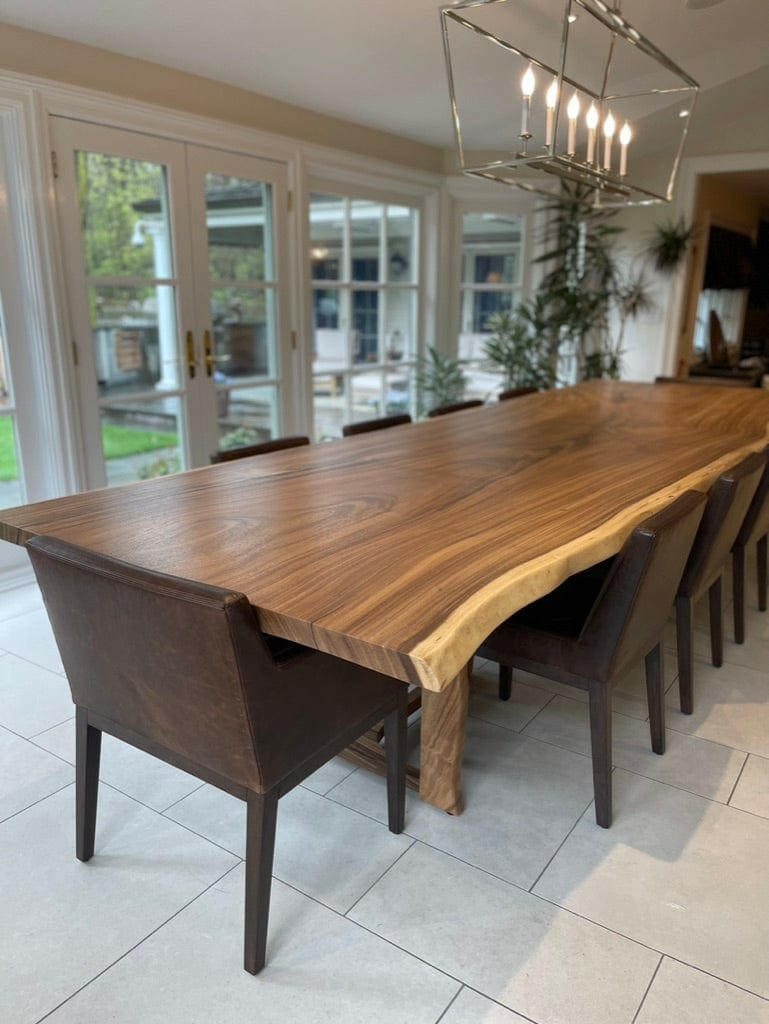Personalized Dining Room Table Legs: A Stylish Enhancement to Any Kind Of Home
Wiki Article
A Detailed Take A Look At Table Leg Styles: Finding the Ideal Match
Selecting the best table leg style is essential for both visual allure and useful capability. Standard four legs provide classic beauty and security, while the stand base gives raised legroom and a modern look. For those with larger tables, trestle legs make certain durable support, whereas barrette legs introduce a mid-century contemporary vibe with their minimalist style. The x-shaped legs blend contemporary design with improved stability. Each of these choices brings one-of-a-kind advantages, making the selection greater than simply an issue of preference. Check out better to uncover which style flawlessly complements your eating space and way of life.Typical Four Legs
Among the various kinds of eating table leg designs, the typical four-leg design continues to be a classic selection for many houses. Four legs give balanced assistance, making certain the table continues to be stable and capable of birthing substantial weight (dining room table legs).From a visual perspective, the traditional four-leg layout can be easily adjusted to different indoor designs. Whether crafted from wood, steel, or a mix of products, these legs can be intricately carved, streamlined and minimalistic, or anything in between. Their flexibility permits them to complement both rustic and contemporary setups effortlessly.
In addition, the simple structure of the four-leg layout facilitates convenience of motion and placement within an area. Unlike more complicated bases, this design decreases blockages, offering ample legroom for diners. In summary, the traditional four-leg table leg style weds withstanding sophistication with useful functionality, making it an astute option for those looking for both kind and function in their dining furniture.
Pedestal Base
Often celebrated for its sophisticated and space-efficient style, the pedestal base is a recognized choice to the conventional four-leg arrangement in eating table leg designs. Without corner legs, restaurants are managed greater freedom of motion, making it an ideal choice for round and oval tables that advertise even more intimate and comprehensive gatherings.The main column itself supplies a canvas for elaborate designs and imaginative expressions, including a component of visual passion beneath the table. In summary, the pedestal base integrates functionality with design, making it a refined and practical choice for diverse dining atmospheres.
Trestle Legs
Trestle legs offer a robust and ageless foundation for eating tables, defined by their straight cross-bracing and strong support light beams. Stemming from middle ages times, this style has actually developed yet maintained its important structure, making it a perennial fave in both standard and modern setups. The main trestle beam of light, often sustained by 2 or even more vertical posts, supplies outstanding stability, enabling for larger table lengths without the need for added legs.A significant advantage of trestle leg tables is the sufficient legroom they offer. Unlike tables with 4 corner legs, the absence of blockages at the table's edges supplies unimpeded room for chairs and restaurants, enhancing comfort and accessibility. This makes trestle tables ideal for suiting bigger events, whether in a dining-room or a reception see here hall.
From rustic farmhouse to sleek contemporary designs, trestle legs can be customized to suit specific tastes. Their long-lasting charm and functional benefits make trestle legs a compelling choice for those looking for both design and usefulness in their dining table.
Barrette Legs

The allure of hairpin legs hinges on their simplicity and adaptability - dining room table legs. Offered in a variety of products, including steel and best site brass, they have a peek at these guys can be finished in countless colors to complement various interior styles. Whether paired with a rustic wood tabletop or a contemporary glass surface, barrette legs easily mix performance with a touch of vintage charm
Longevity is one more noteworthy function of barrette legs. Despite their fragile look, these legs are crafted to birth substantial weight, ensuring the dining table continues to be steady and protected. Furthermore, they are reasonably very easy to set up, making them a preferred selection for DIY lovers and professional furnishings makers alike.
X-Shaped Legs

Created from products such as steel, timber, or a mix of both, X-shaped legs can be customized to match various style preferences. Steel legs usually lend a smooth and industrial feel, suitable for loft-style apartments and modern-day eating areas. On the various other hand, wooden X-shaped legs use a warmer, much more rustic allure, ideal for farmhouse or diverse interiors. The adaptability in materials allows home owners to customize their table to better fit their overall design plan.
Furthermore, the design behind X-shaped legs makes sure even weight circulation, minimizing the risk of wobbling and improving toughness. This makes them especially well-suited for larger eating tables that need additional support. In significance, X-shaped legs blend useful engineering with contemporary appearances, making them a classic choice for varied dining environments.
Conclusion
A thorough understanding of table leg designs exposes the unique characteristics and advantages of each layout. Traditional 4 legs use security and classic charm, while pedestal bases supply legroom and a streamlined look. Trestle legs guarantee durable support for larger tables, and hairpin legs present a mid-century modern-day visual. X-shaped legs integrate contemporary design with enhanced stability. Picking the proper leg design guarantees both functional and aesthetic fulfillment in any type of dining space.Report this wiki page